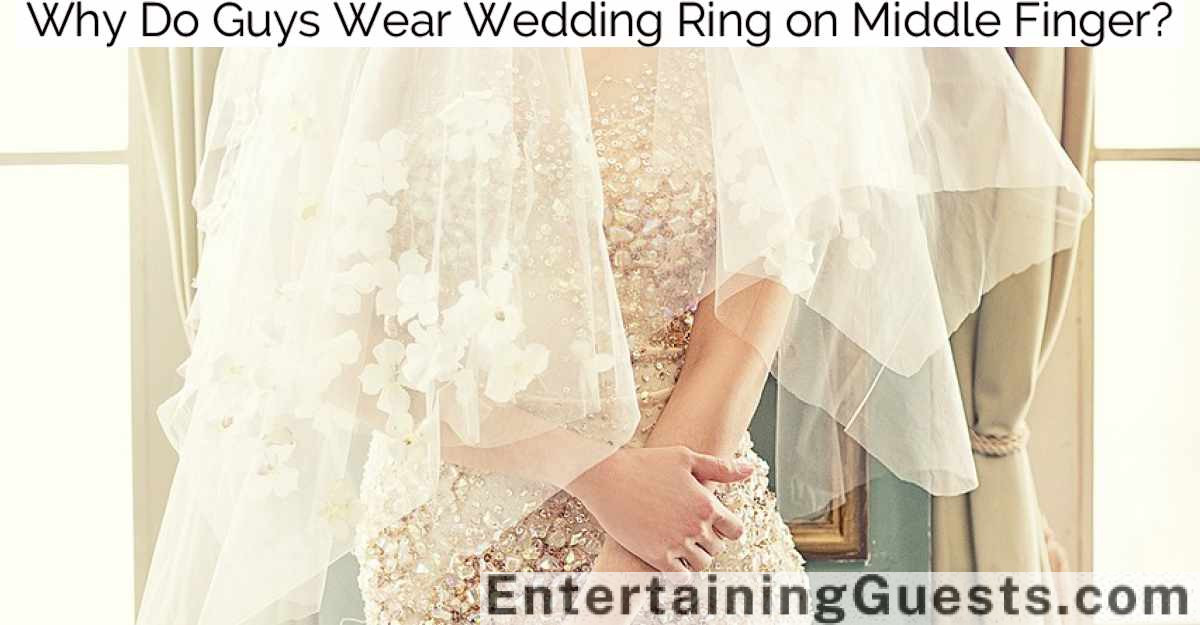Wedding albums are so expensive because they embody a meticulous blend of artistry and durability, curated to last generations. Professional photographers capture intimate, candid moments, which skilled artisans transform into visual narratives using high-grade, acid-free materials and UV-resistant coatings. The custom designs reflect personal touches and thematic continuity, enhancing the storytelling of the couple’s special day. Each album undergoes a detailed design and labor-intensive production process, involving hand-cut layouts and custom bindings. The investment guarantees that these memories withstand the test of time, preserving cherished moments in an artifact that gain more depth and significance as years pass.
Key Takeaways
- Wedding albums use high-quality, durable materials like genuine leather and acid-free paper to ensure longevity and vibrancy.
- Professional photography and advanced editing techniques enhance images, requiring skilled labor and time, adding to the cost.
- Albums are often custom-designed, incorporating personal touches and thematic elements that reflect the couple’s unique story.
- Artisanal craftsmanship involves labor-intensive techniques such as hand-stitching and manual embellishments, ensuring each album is a bespoke artifact.
- The production process includes detailed design, limited edition printing, and meticulous post-production enhancements, all contributing to higher costs.
The Role of Professional Photography
Professional photographers play an essential role in capturing the essence and emotion of your wedding day, transforming fleeting moments into timeless memories. Their expertise goes beyond merely taking pictures; they’re artists who frame scenes meticulously, manage challenging lighting conditions, and anticipate intimate moments before they unfold. This requires not only technical skill but also an innate sensitivity to the emotional atmosphere of the wedding.
The meticulous selection process of a professional photographer is fundamental. They’ll consider the venue’s aesthetics, the day’s timeline, and the couple’s personality, ensuring the photographic style aligns perfectly with the couple’s vision. During the event, they blend into the background, capturing candid moments that might otherwise go unnoticed. These spontaneous images often hold the most sentimental value as they represent genuine, unscripted emotions.
Post-event, the photographer spends considerable hours in editing. Each image is carefully reviewed, ensuring the color balance, lighting, and sharpness reflect the day’s beauty. This post-processing is as critical as the shoot itself, as it enhances the photos while maintaining their authenticity.
Thus, a professional photographer’s role is pivotal in creating a wedding album that isn’t just a collection of photos, but a beautifully curated story of the day.
Quality of Materials Used
Beyond the skillful capture and editing of photographs, the quality of materials used in wedding albums greatly enhances the preservation and display of your cherished memories.
Premium albums are often crafted from high-grade, durable materials that guarantee longevity. The choice of paper, for example, isn’t just about aesthetics; it’s about archival quality. Top-tier wedding albums utilize acid-free papers that prevent yellowing over time, safeguarding the vibrancy and clarity of each image.
The cover of the album is another area where quality is paramount. Luxury options include genuine leather, suede, or even silk, which not only feel sumptuous but stand up to wear and tear. These materials are carefully selected for their robustness and ability to protect the precious pages inside.
Even the binding method contributes to the album’s overall quality. Hand-stitched bindings, though more costly, offer a level of durability that machine bindings can’t match.
Moreover, the use of UV-resistant coatings on photographs can prevent fading from light exposure, guaranteeing that the memories captured don’t diminish in vibrancy.
Each element, from paper to cover to binding, is chosen with both aesthetics and durability in mind, contributing considerably to the cost but also to the lasting value of these bespoke keepsakes.
Custom Design and Layout
While the choice of materials sets a foundational quality, the custom design and layout of a wedding album further personalize its allure and functionality. Each album is a unique narrative canvas, meticulously crafted to reflect the individual love story it holds. Designers work closely with couples, listening to their desires and translating these into visual poetry.
The process is akin to creating a bespoke piece of art where every element is chosen with care:
- Thematic Continuity: Designers guarantee that the theme of the wedding—be it rustic charm, elegant minimalism, or vibrant festivity—is echoed throughout the pages of the album. This creates a cohesive visual experience that enhances the emotional impact of the photographs.
- Spatial Harmony: The layout of images is planned to achieve a balance between variety and unity, guaranteeing that each page compositionally complements the others. This includes decisions on image size, spacing, and sequence.
- Personal Touches: Incorporating personalized elements such as quotes, dates, or special locations adds depth and intimacy, making the album a truly tailored keepsake.
These artistic decisions require a deep understanding of visual storytelling and design principles, guaranteeing that each wedding album isn’t only a collection of photos but a crafted piece of family heritage.
Labor Intensive Production
Creating a wedding album isn’t just about assembling photos; it involves skilled artisans who meticulously handcraft each page.
The detailed design process guarantees that every element, from cover to cover, reflects the couple’s unique story and style.
These time-consuming techniques, while costly, result in a bespoke keepsake that captures the essence of the wedding day with elegance and precision.
Skilled Artisan Involvement
Skilled artisans meticulously handcraft each wedding album, a process that demands both time and expertise. Each album’s creation involves numerous hours of labor by craftspeople who aren’t only highly skilled but also deeply passionate about their craft. This isn’t a mere assembly line production; it’s an artistic endeavor that infuses love and care into every piece.
These artisans use traditional tools and techniques that have been honed over decades, if not centuries. The materials selected are always of the highest quality, carefully chosen to guarantee durability and aesthetic appeal. The personal touch of a skilled hand adds a unique element to each album, making it not just a product, but a personal heirloom.
The involvement of skilled artisans in the production of wedding albums adds notably to their cost. Consider the following aspects:
- Precision Cutting of Materials: Each piece of material, be it leather, paper, or cloth, is cut with precision to guarantee flawless assembly.
- Intricate Assembly: Components are assembled with exacting standards, often requiring small, precise movements that machines can’t replicate.
- Quality Control: Each album undergoes rigorous checks to guarantee that it meets the high standards expected of a bespoke product.
Crafting a wedding album is a labor of love that results in a tangible collection of memories, designed to be cherished for generations.
Detailed Design Process
Before any assembly begins, each wedding album undergoes a meticulous design process, where every detail is carefully planned to guarantee both beauty and functionality. Designers collaborate with the couple to select a theme that reflects their personal story and style preferences. This initial consultation is essential, as it sets the tone for the entire project.
Once the theme is established, designers draft initial layouts, considering elements like color schemes, typography, and the narrative sequence of the photographs. They often employ sophisticated software to create digital mockups, presenting these to the couple for feedback and ensuring every page resonates with their vision. Adjustments are common; the goal is to achieve a harmonious balance between aesthetic appeal and emotional impact.
Material selection is another vital aspect, with choices ranging from high-quality paper stocks to bespoke cover materials. Designers must understand the properties of these materials not only for aesthetics but also for their durability and ability to preserve memories over time.
The design process, consequently, isn’t just about putting photos into an album; it’s about crafting a bespoke piece of art that captures the essence of the couple’s special day. Each decision, from layout to material choice, is made with the utmost care, ensuring the final product is both stunning and lasting.
Time-Consuming Techniques
Following the initial design phase, the production of wedding albums involves labor-intensive techniques that demand meticulous attention to detail and craftsmanship.
Each album is a unique piece, requiring not only creative vision but also precision and patience. The artisans involved must possess a blend of technical skill and artistic sensibility, guaranteeing that each page tells part of a love story in the most beautiful way possible.
To truly appreciate the complexity of these techniques, consider the following tasks that contribute to the production of a single wedding album:
- Hand-cutting and Assembling: Each photograph is carefully measured and cut, then hand-assembled onto the album pages. This process guarantees that the layout is both aesthetically pleasing and durable.
- Custom Binding: Albums are often bound by hand using various materials such as leather or silk. This not only makes them more robust but also adds a touch of elegance.
- Embellishment Application: Details such as gold leaf, embossing, or intricate borders are applied manually, requiring steady hands and an eye for design.
These steps, though time-consuming, are what make wedding albums so valuable. They’re not just collections of photographs; they’re bespoke artifacts crafted with love, meant to preserve memories for a lifetime.
Limited Edition Printing
Limited edition printing elevates a wedding album into a unique art piece, meticulously crafted for exclusivity and quality. This specialized process involves selecting premium materials that guarantee longevity and aesthetic superiority.
Each album isn’t just a collection of photographs but a bespoke artifact, often involving hand-made elements and custom-designed features that cater specifically to the couple’s tastes and the theme of their wedding.
The choice of paper is critical; luxury options may include heavyweight, acid-free varieties that offer enhanced color reproduction and resist fading. Such papers contribute not only to the tactile experience but also amplify the visual impact of each printed image.
The inks used are equally important, with archival quality inks being preferred for their ability to retain vibrancy and depth over decades.
Binding techniques in limited edition printing also differ considerably from standard practices. Artisans may employ methods like Japanese binding or lay-flat pages to add an extra level of sophistication and functionality. These processes are labor-intensive and require precise execution, which naturally adds to the cost.
Furthermore, the production runs for these albums are intentionally kept low to maintain their exclusivity. Each copy is often numbered, adding to its collectible value and personal significance, making it a treasured keepsake for generations.
Post-Production Enhancements
In the domain of wedding albums, post-production enhancements play an essential role in transforming raw images into breathtaking keepsakes.
These enhancements include advanced editing techniques that refine the visual narrative, alongside custom design elements that add a unique flair to each page.
Additionally, the significant time invested in retouching guarantees every detail in the photographs meets the highest standards of perfection.
Advanced Editing Techniques
Advanced editing techniques transform ordinary wedding photos into breathtaking visual narratives, employing tools like color grading, retouching, and creative compositing to enhance each image’s emotional impact. These processes require significant skill and time, contributing to the high costs of wedding albums.
Photographers and editors utilize advanced software to carefully adjust the colors and lighting of each photo, ensuring they convey the right mood and atmosphere. For instance, they can enhance the golden hues of a sunset backdrop during a beach wedding, making the moments appear even more magical.
Retouching is another critical step, where professionals meticulously remove blemishes, smooth out wrinkles, and sometimes even alter backgrounds to keep the focus on the couple.
The magic of editing doesn’t stop there; creative compositing allows editors to create images that capture the essence of the day in ways that aren’t possible in a single shot. They might merge several photos to craft a perfect scene or add artistic elements that reflect the couple’s style and story.
Key visual enhancements include:
- Color Grading: Adjusting tones to warm a chilly day or cool down a mid-summer ceremony.
- Retouching: Polishing details to perfection, ensuring every frame is flawless.
- Compositing: Blending multiple images for a unique, storytelling effect.
These techniques, while often invisible in the final product, require a high level of expertise and artistic vision, justifying the investment in a professionally curated wedding album.
Custom Design Elements
Beyond basic edits, photographers often incorporate custom design elements, tailoring each album to reflect the unique style and personality of the couple. This customization goes beyond merely arranging photographs chronologically; it involves a thoughtful process of selecting themes, motifs, and colors that resonate with the couple’s individual story.
For instance, a beach-themed wedding might have an album adorned with subtle oceanic hues and textures, seamlessly integrating sand-like overlays or shell patterns into the page designs.
Photographers also consider the type of paper, the finish of each page, and the binding of the album, ensuring these materials complement the aesthetic of the wedding. The choice of a matte finish for a vintage style wedding or a glossy finish for a vibrant, modern celebration isn’t just about appearance—it’s about evoking emotions and memories through tactile sensations.
Moreover, some albums feature unique, handcrafted embellishments such as embossing or engraving with the couple’s names or wedding date, which adds a personal touch that off-the-shelf albums simply can’t match.
These intricate details require not only creativity but also time and craftsmanship, contributing greatly to the overall cost of the wedding album.
Retouching Time Investment
Photographers also invest significant time in post-production, meticulously enhancing each photo to secure peak quality and artistic expression. This vital phase involves more than just basic editing; it’s about bringing a photographer’s artistic vision to life, guaranteeing that the final images not only capture moments but also evoke emotions and tell a compelling story.
The process of retouching and enhancing wedding photos is both labor-intensive and creative. It includes:
- Color Correction: Adjusting the color balance to guarantee the photos look natural and vibrant, reflecting the actual ambiance of the wedding day.
- Skin Smoothing: Carefully softening skin tones to remove blemishes while retaining texture, giving everyone a polished yet realistic appearance.
- Detail Enhancement: Sharpening details in dresses, suits, and the surrounding decor to draw attention to the intricate elements of the wedding setting.
Each image receives individual attention, sometimes requiring several minutes or even hours to perfect. It’s not just about removing a stray hair or adjusting exposure; it’s about refining each shot until it meets the high standards expected in a professional wedding album.
This dedication to quality is a key reason why wedding albums are a significant investment.
Packaging and Presentation
In the domain of wedding albums, the impact of elegant packaging and presentation can’t be overstated. Professional photographers and designers understand that a couple’s first interaction with their physical memories hinges greatly on the visual and tactile quality of the album’s presentation. It’s about creating an experience that resonates as deeply as the photographs within.
The choice of materials plays an essential role in this process. High-quality linens, leathers, or bespoke, custom-printed covers are often employed to invoke a sense of luxury and permanence. These materials aren’t just chosen for their aesthetics but also for their ability to protect the album’s contents while offering a pleasing tactile interaction.
Attention to detail extends to the binding techniques used. Options like lay-flat binding not only enhance the viewing experience by allowing pages to rest flat but also contribute to a seamless, sophisticated presentation. This method, while more costly, guarantees that each spread looks impeccably polished and invites uninterrupted viewing.
Designers also consider the boxing of the album, selecting sturdy, attractive cases that not only safeguard the album but also elevate the act of revealing it. Whether it’s a simple, elegant box or a more elaborate case, the packaging sets the stage for the treasures inside, turning every revelation into a special occasion.
Longevity and Preservation
While packaging guarantees the initial impact of a wedding album, its materials and design also play pivotal roles in safeguarding the photographs for generations. The choice of high-quality materials isn’t just about aesthetics; it’s about creating a durable repository that withstands the test of time.
Wedding albums are often crafted using acid-free papers, which prevent the yellowing and degradation common in standard photographic paper. This guarantees that the vivid colors and sharp contrasts of your special day remain preserved as they were initially captured.
The binding of these albums is another critical aspect. Using sturdy, often hand-stitched methods, the pages are bound in such a way that they can be turned thousands of times without wearing out. The covers are typically made of robust materials like leather or high-grade synthetic substitutes, which not only feel luxurious but offer substantial protection against environmental factors such as humidity and light exposure.
To visualize the essence of durability and aesthetic in wedding albums, consider the following:
- The gleam of a leather cover as it catches the light, hinting at the treasures held within.
- Thick, creamy pages that turn with a satisfying whisper, each bearing moments frozen in time.
- The sturdy spine, standing robust on your bookshelf, promising years of re-living cherished memories.
Frequently Asked Questions
Can I Supply My Own Photos for the Wedding Album?
She can supply her own photos for the wedding album, but she’ll need to confirm that her photographer agrees and that the images meet the album’s quality specifications and formatting requirements.
Are Digital Copies Cheaper Than Printed Albums?
Digital copies are generally cheaper than printed albums because they avoid printing and material costs. They’re easily shared and stored, offering a cost-effective alternative while maintaining the artistic integrity of the wedding memories.
Do Prices Vary by Season or Wedding Location?
Prices do fluctuate based on season and location. Peak wedding seasons often see higher costs due to increased demand, and prestigious venues may charge more for their scenic or iconic settings.
Is There a Discount for Multiple Album Orders?
Photographers often offer discounts for multiple album orders, recognizing clients’ desire for additional copies for family. Bulk orders reduce production costs, enabling these savings to be passed along to the customer.
How Do I Protect My Album From Damage Over Time?
To protect her album from damage over time, she should store it in a cool, dry place and use acid-free sleeves. Avoiding direct sunlight and handling the pages with clean hands also helps.
Conclusion
Wedding albums stand as cherished keepsakes, encapsulating precious moments with artistry and care.
The expense reflects the meticulous effort of professional photographers, the high-quality materials, and the custom design that guarantees these memories last a lifetime.
Each album, laboriously crafted and enhanced in post-production, isn’t just a collection of photos but a personalized storybook, beautifully packaged to endure through generations.
It’s an investment in preserving priceless moments in unmatched elegance and durability.







